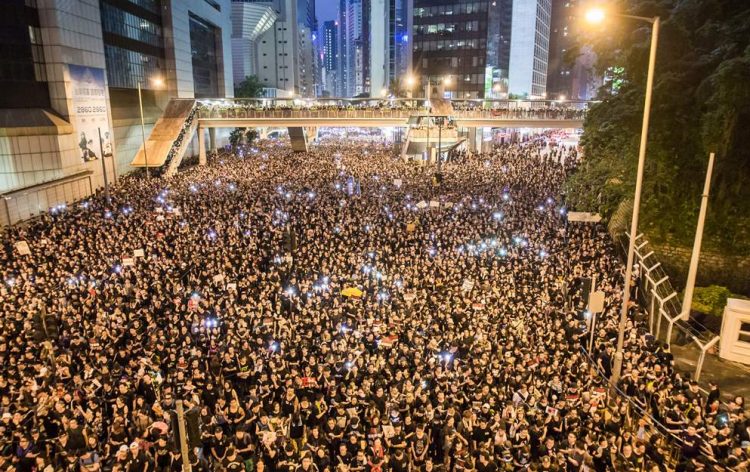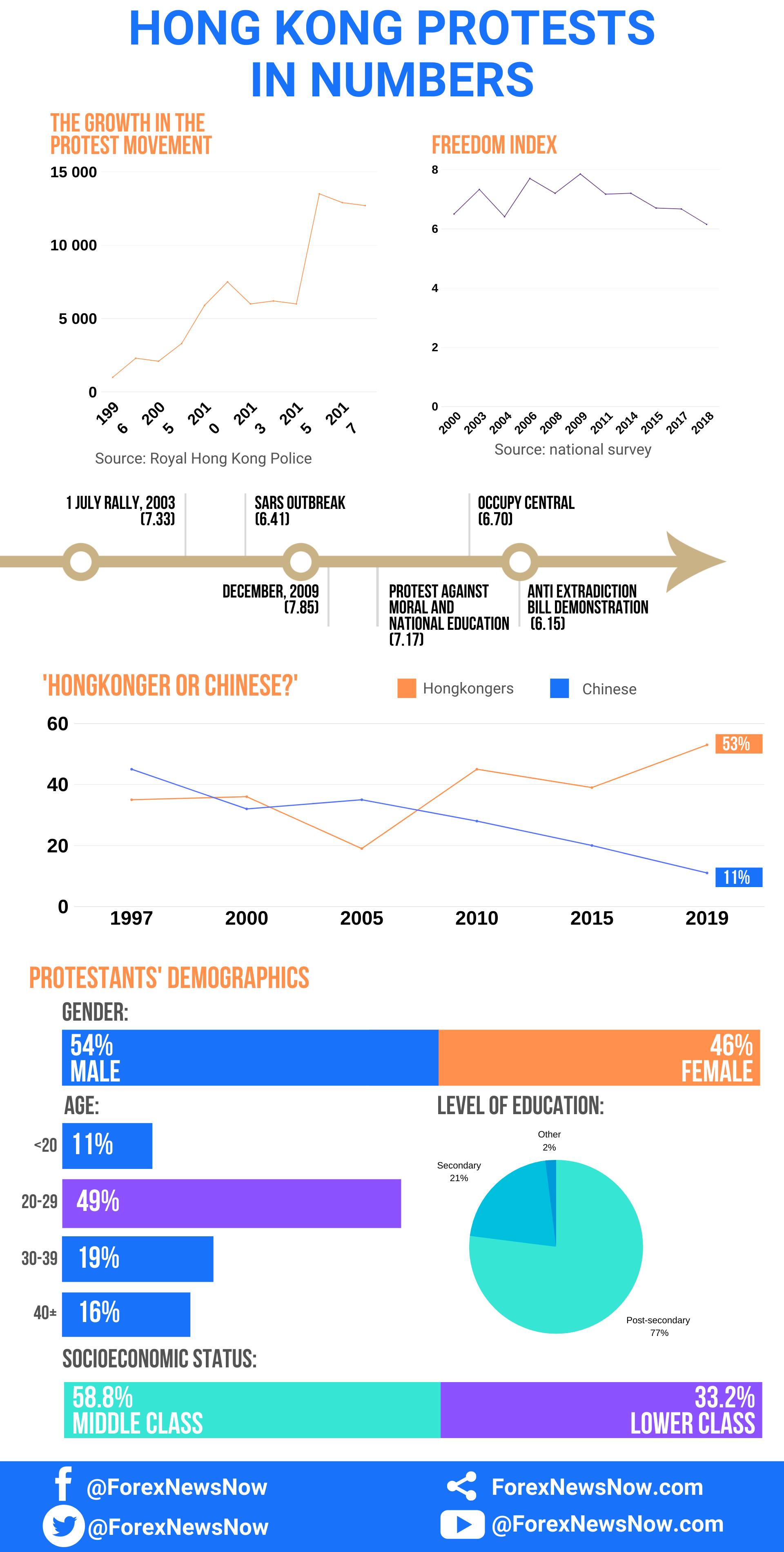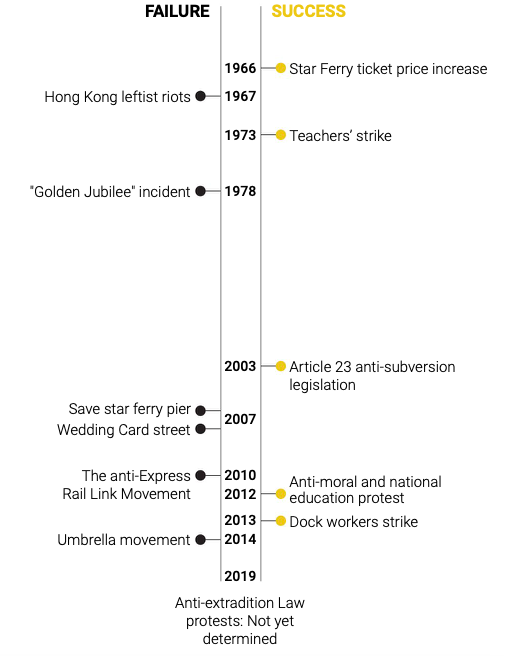Infographic: Hong Kong protests 2019

It is now already 5 months that the protests in Hong Kong have taken a severe form. Those couple of months were full of large-scale protests that were accompanied by armed confrontation. For instance, on June 16, up to two million residents took the streets to oppose an extradition act that was imposed by the government. Another huge strike took place on July 1, which, notably, became the anniversary of Hong Kong’s return to Chinese rule.

Ever since 1996, the number of public offer events was rising gradually. Starting with approximately 1.000 public protests per year in 1996, the level has reached a record of 13.158 manifestations and strikes in 2016, according to the Royal Hong Kong Police’s data.
Moreover, there was a national survey conducted throughout the last decade where citizens were asked about their subjective level of freedom at a certain point in Hong Kong’s history, where 8 was indicating an absolute freedom and 0 a complete lack of it. We can see that by far the lowest rate was marked in 2018 when the anti extradition bill demonstration took place.
However, we might add that not all of the strikes throughout history were successful and effective. On the contrary, the majority of those did not lead to any positive outcomes.
 The perception of people has changed dramatically over the past few years. If earlier, in 1997, the great number of the citizens living in Hong Kong (approximately 45%) were positively naming themselves ‘Chinese’, now we see the downward trend that decreased the percentage of those to only 11% in 2019. Meanwhile, the rate of people living in Hong Kong and calling themselves ‘Hongkongers’ respectively has grown from around 37% in 1997 to 53% this year.
The perception of people has changed dramatically over the past few years. If earlier, in 1997, the great number of the citizens living in Hong Kong (approximately 45%) were positively naming themselves ‘Chinese’, now we see the downward trend that decreased the percentage of those to only 11% in 2019. Meanwhile, the rate of people living in Hong Kong and calling themselves ‘Hongkongers’ respectively has grown from around 37% in 1997 to 53% this year.
According to AntiELAB Survey Report, more than half of all protestants are male (54%). Almost half of those are between 20 and 29 years old (49%). Furthermore, people actively participating in these protests have obtained their post-secondary degree and are coming from a middle socioeconomic societal class. Of course, there are still those who are not fully educated and are coming to manifestations just to become part of the crowd. However, the majority of participants are educated people who want to change the current situation.
Apart from that, there were also three main reasons for protest participation highlighted in the recent reports. The primary one at the moment is ‘dissatisfaction with police handling of the protests’. Another reason for people coming at the streets to directly oppose police is, of course, ‘withdrawal of the extradition bill’. And, finally, ‘setting up an independent commission of inquiry’.
Let’s go back and refresh our memory about what initially happened and why it escalated to such a serious and severe sociopolitical crisis.
It all started back in April 2019, when the bill allowing the criminal suspects to be extradited to mainland China was imposed. People got worried that this will eventually expose Hongkongers to unfair trials and violent treatment. Moreover, that would give China an even greater extent of control over Hong Kong. That was when people started going out to the streets protesting and showing their opinion about the bill. It lasted until leader Carrie Lam eventually said the bill would be suspended indefinitely.
However, as protesters were afraid that the bill can go retrieved, the demonstrations carried on in order to make the government withdraw the bill completely. Even though in September the bill was finally withdrawn, the protestants said this was “too little, too late”.



























Comments (0 comment(s))